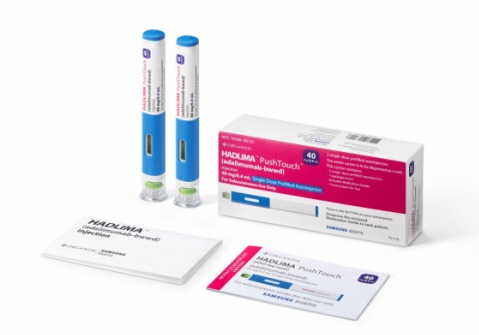Samsung Bioepis and Organon announced on Wednesday the interchangeable result of its Humira (adilumab) biosimilar, SB5, based on a recently conducted phase 4 study.
Clinical interchangeability studies aim to assess whether one product will affect the immune response of the other once the switch between the reference drug and the biosimilar occurs. These studies investigate the differences in immunogenicity or pharmacokinetic (PK) profiles.

Samsung Bioepis previously established similarity with Abbvie’s Humira in phase 3 studies and was approved by the FDA in July 2019 for a low-concentration (50 mg/mL) formulation and subsequent approval for the high-concentration (100 mg/mL) formulation in August 2022. It launched the drug in the U.S. last month.
The primary objective of the latest study was to assess the pharmacokinetic similarity between patients with moderate to severe plaque psoriasis who switched multiple times between Humira (adalimumab or ADL) and high-concentration SB5 vs. patients receiving Humira continuously.
All 371 patients enrolled in the study had no prior treatment with ADL and were treated in this study with ADL during a lead-in period of 13 weeks. At week 13, patients who achieved at least a 50 percent reduction in Psoriasis Area and Severity Index (PASI50) the response was randomized in a 1:1 ratio to either be switched between ADL and SB5 or continue on ADL.
The study achieved all primary endpoints, including the pharmacokinetic endpoints of AUCtau and Cmax, at weeks 23-25. Efficacy profiles, safety profiles, and immunogenicity were also comparable between the two treatment groups. The AUCtau measures the area under the concentration-time curve over the dosing period, and Cmax measures the maximum serum concentration during the dosing period.
The geometric least squares mean ratio of AUCtau for weeks 23-25 was (0.8007, 1.1115) and Cmax (0.8637, 1.1433), both fell into the pre-defined margins of 0.8 and 1.25.
The multicenter clinical study for SB5 was conducted across 33 sites in four countries, including Bulgaria, Czechia, Lithuania, and Poland, from August 2022 to May 2023 in patients with moderate to severe chronic plaque psoriasis.
Related articles
- Samsung Biologics' first-half revenue up 36% year-on-year
- Samsung Bioepis, Organon's Humira biosimilar added to Cigna's list of preferred drugs
- Samsung Bioepis, Celltrion Healthcare launch Humira biosimilar in US
- Samsung Bioepis considers acquiring Biogen's biosimilar unit
- Samsung Bioepis' Humira biosimilar gaining traction in US market, totaling 4 US payers
- Samsung Bioepis strikes commercialization deal with Sandoz for Stelara biosimilar
- Samsung Bioepis wins prizes at GGB Awards 2023
- Organon Korea sales and customers lead named new head for Organon Malaysia
- Samsung Bioepis, Biogen lose Humira biosimilar patent fight in Germany

